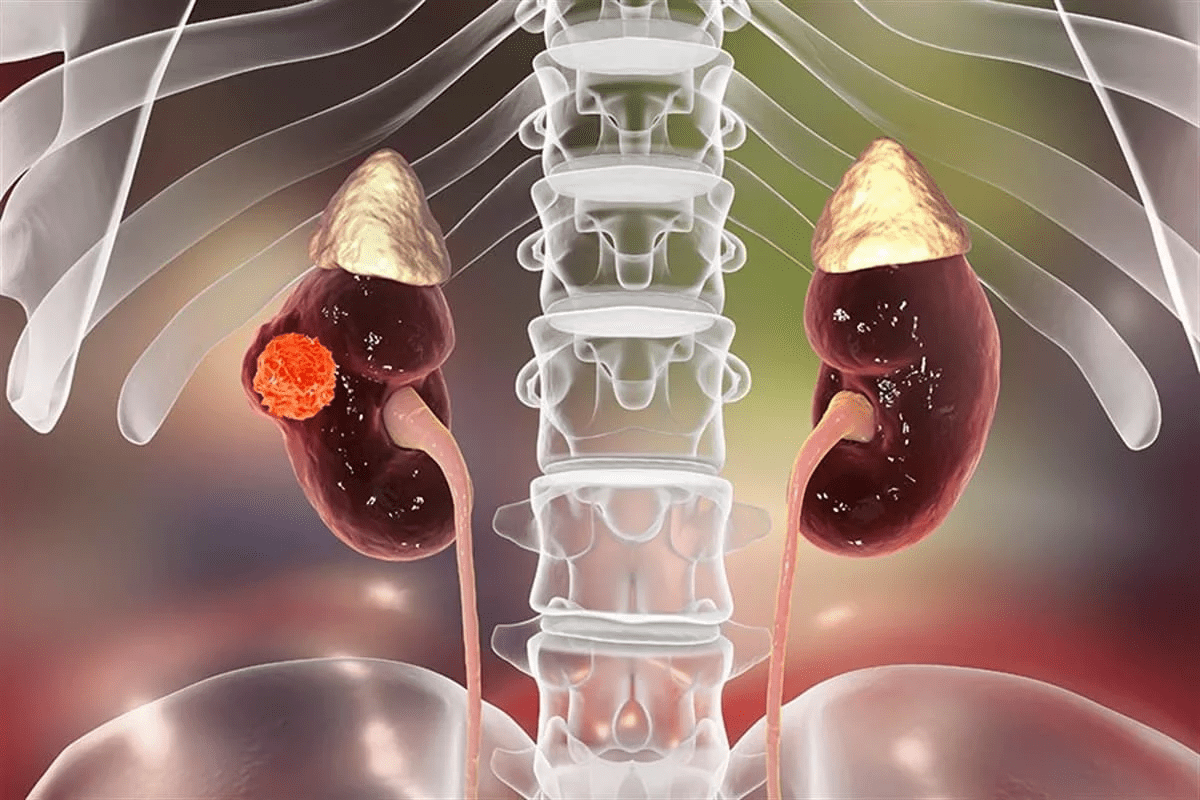Last Updated on November 26, 2025 by Bilal Hasdemir

At Liv Hospital, we focus on advanced aortic care. We use cutting-edge procedures like Fenestrated Endovascular Aneurysm Repair (FEVAR) for complex aneurysms. For those unfamiliar, FEVAR medical abbreviation stands for this innovative, minimally invasive approach.
FEVAR is a modern method to treat large aortic aneurysms near critical branches. It uses specially designed stent grafts tailored to each patient, making treatment safer and more precise.
Studies have shown that FEVAR is highly effective for challenging aneurysms. In this article, we’ll explore EVAR, stents, and the FEVAR procedure in detail.
Key Takeaways
- FEVAR is a minimally invasive procedure for treating complex abdominal aortic aneurysms.
- Customized fenestrated stent grafts are used to accommodate important arterial branches.
- FEVAR has evolved as a critical therapeutic option for patients with complex aortic pathologies.
- Liv Hospital is a recognized leader in patient-centered aortic care.
- Recent studies have shown the effectiveness of FEVAR in treating complex aneurysms.
What is the FEVAR Medical Abbreviation? Definition and Importance
FEVAR stands for Fenestrated Endovascular Aneurysm Repair. It’s a modern way to fix complex aneurysms near branch vessels. This method is a big step forward, making surgery less invasive than before.
Complete Terminology and Basic Concept
The word “fenestrated” means the stent graft has special holes. These holes let blood flow to important branch vessels. Fenestrated Endovascular Aneurysm Repair helps patients with complex aortic aneurysms. These are cases where regular EVAR won’t work.
Key parts of FEVAR are:
- Stent grafts with special holes
- A less invasive method for quicker recovery
- It can handle complex aneurysms near branch vessels
Evolution of FEVAR in Vascular Surgery

FEVAR has grown a lot over time. It’s now a key treatment for complex aortic problems. Better imaging and stent grafts have made FEVAR more precise and effective.
The growth of FEVAR includes:
- Better stent graft customization
- Advanced imaging for better guidance
- More skilled vascular surgeons
Today, FEVAR is a vital part of vascular surgery. It gives hope to those with complex aortic aneurysms.
The Science Behind Fenestrated Endovascular Aneurysm Repair

FEVAR is a new way to fix complex aneurysms that old methods can’t handle. These aneurysms are tricky because they touch important blood vessels. This makes fixing them much harder.
Anatomical Challenges Addressed by FEVAR
Complex aneurysms are hard to deal with because they affect vital blood vessels. For example, the renal or visceral arteries. Old methods might block these, causing serious problems. FEVAR uses a special stent graft to keep these vessels open, ensuring blood keeps flowing.
Planning for FEVAR needs a lot of detailed images. These show how the aneurysm and its blood vessels are connected. This info helps make a custom stent graft that fits perfectly.
Step-by-Step Breakdown of the FEVAR Procedure
The FEVAR process is complex and includes several important steps:
- Pre-procedure planning: First, detailed images like CT angiography are taken. They help plan the stent graft’s design.
- Deployment of the fenestrated stent graft: Next, the custom stent graft is put in place. It’s done through a small incision, making sure it fits right.
- Ballooning and stenting of branch vessels: Then, balloons are used to make sure the stent graft fits snugly. Stents might also be added to keep the blood vessels open.
- Completion angiography: Last, images are taken to check if the aneurysm is closed off and the blood vessels are open.
| Step | Description | Key Considerations |
| 1. Pre-procedure planning | Detailed imaging to assess aneurysm anatomy | Accurate measurement of aneurysm and branch vessels |
| 2. Deployment of stent graft | Minimally invasive deployment of customized stent graft | Precise positioning to align fenestrations with branch vessels |
| 3. Ballooning and stenting | Expansion of stent graft and stenting of branch vessels | Ensuring a seal at fenestrations and patency of branch vessels |
EVAR for Abdominal Aortic Aneurysms (AAA): Standard Approach
Endovascular Aneurysm Repair (EVAR) is now the top choice for treating Abdominal Aortic Aneurysms (AAA). It’s less invasive than traditional surgery. We’ll look at how EVAR works for AAA and its advantages over open surgery.
How EVAR Works for Standard AAA Cases
EVAR uses a stent graft inserted through small groin incisions. It’s guided by AAA radiology. This graft strengthens the aortic wall, lowering the risk of rupture.
The procedure is done under local or general anesthesia. It requires a shorter hospital stay than open surgery.
The stent graft is made to fit each patient’s anatomy. It comes in various sizes and shapes. Once in place, it lets blood flow while stopping the aneurysm from growing.
Benefits of Minimally Invasive EVAR vs. Open Surgery
EVAR has many advantages over open surgery. Reduced recovery time is a big plus, as it’s less invasive. Patients feel less postoperative pain and can get back to normal faster.
Another key benefit is the lower risk of complications. EVAR cuts down on infection, blood loss, and other surgery risks. This makes it safer for many patients, like those with health issues or older adults.
| Aspect | EVAR | Open Surgery |
| Recovery Time | Shorter | Longer |
| Postoperative Pain | Less | More |
| Risk of Complications | Lower | Higher |
In summary, EVAR is now the go-to for AAA treatment. It offers shorter recovery times, less pain, and fewer complications. As technology improves, EVAR will likely get even better.
Comparing FEVAR and EVAR: When Each Procedure is Indicated
Choosing between FEVAR and EVAR depends on the patient’s anatomy and the aneurysm’s complexity. Both are used for abdominal aortic aneurysms but serve different needs. They are suited for different patients.
Anatomical Considerations for Procedure Selection
When choosing between FEVAR and EVAR, anatomy matters a lot. EVAR is best for standard abdominal aortic aneurysms (AAA) with the right anatomy. FEVAR is better for complex aneurysms with important branch vessels, like juxtarenal or suprarenal aneurysms.
- Presence of critical branch vessels near the aneurysm
- Aneurysm size and location
- Patient’s overall vascular health
These factors help decide the best procedure. They affect the treatment’s success and feasibility.
Recovery and Outcomes: FEVAR vs. EVAR
Both FEVAR and EVAR are less invasive than open surgery. They offer quicker recovery and less pain. But, outcomes can differ based on the procedure and patient.
Key differences in recovery and outcomes include:
- Length of hospital stay: EVAR is usually shorter
- Recovery time: Both are quicker than open surgery, but FEVAR might take a bit longer
- Complication rates: FEVAR might have higher risks due to its complexity
Knowing these differences helps manage patient expectations and make informed decisions.
Fenestrated Stent Grafts: Engineering and Customization
Fenestrated stent grafts are a big step forward in vascular surgery. They offer tailored solutions for complex aortic aneurysms. These grafts fit each patient’s unique anatomy, keeping blood flowing to important vessels.
We’ll dive into the details of fenestrated stent grafts. We’ll look at their engineering and how they’re customized for each patient.
What Makes a Stent “Fenestrated”
A fenestrated stent graft has special openings called fenestrations. These openings let vital branch vessels get blood flow. The fenestrations are made to fit each patient’s anatomy perfectly.
Advanced imaging helps plan the fenestrations. This info is used to make a graft that meets the patient’s needs.
The Process of Creating Custom Fenestrations
Creating custom fenestrations starts with detailed imaging of the patient’s aorta. High-resolution CT scans or MRI are used for this.
The imaging data is then used to design the stent graft. This includes where and how big the fenestrations should be. The design process is complex, using special software and expertise.
After designing, the graft is made from materials that work well with the body. These materials are strong enough for the vascular environment.
| Step | Description | Technology Used |
| 1. Imaging | Detailed imaging of aortic anatomy | CT scans, MRI |
| 2. Design | Designing the stent graft with fenestrations | Specialized software |
| 3. Manufacturing | Production of the fenestrated stent graft | Biocompatible materials |
The end result is a customized vascular graft. It’s designed to treat complex aortic aneurysms with precision and success.
Stents in the Aorta: Function and Deployment Techniques
Stents have changed vascular surgery, making it less invasive. They help keep blood flowing and stop aneurysms from getting bigger. This reduces the chance of a rupture. Putting these stents in place needs exact techniques and the latest medical tools.
How Aortic Stents Prevent Aneurysm Expansion
Aortic stents strengthen the weak aortic wall. They stop the aneurysm from getting bigger and prevent rupture. By keeping blood flowing right, we lower the pressure on the aneurysm sac. This helps prevent growth, promotes healing, and lowers the risk of problems.
The stents in EVAR procedures are made from strong materials like nitinol or stainless steel. These materials are strong and flexible, fitting the aorta well. The stent graft is put in through a small cut in the groin, guided by imaging to the aneurysm.
Types of Stent Materials and Their Properties
The material of the stent is key for EVAR success. Nitinol stents are flexible and can bend many times without breaking. This makes them great for complex aortas.
Stainless steel stents are strong and last long, fitting many aortic issues. Their surface can be changed to be friendlier to the body and lower reaction risks.
- Nitinol stents: Flexible, resistant to fracture
- Stainless steel stents: High strength, durable
- Other materials: Various properties depending on the specific application
We pick the stent type based on the patient’s anatomy and their aneurysm. This tailored approach aims for the best results and less risk of issues.
TEVAR Surgery: Addressing Thoracic Aortic Pathologies
TEVAR surgery has changed how we treat thoracic aortic diseases. It’s a less invasive option compared to open surgery. We use it to treat aneurysms and dissections in the thoracic aorta, giving patients a better treatment choice.
Key Differences Between TEVAR and FEVAR/EVAR
TEVAR, FEVAR, and EVAR are all endovascular procedures. But they treat different parts of the aorta. TEVAR is for the thoracic aorta, while EVAR and FEVAR are for the abdominal aorta. The main difference is where and how complex the aortic disease is.
- TEVAR targets thoracic aortic diseases.
- EVAR is used for infrarenal abdominal aortic aneurysms.
- FEVAR is utilized for complex abdominal aortic aneurysms that involve renal or visceral arteries.
Common Indications for TEVAR Procedures
TEVAR is used for several thoracic aortic diseases, including:
- Thoracic aortic aneurysms: TEVAR prevents the aneurysm from growing and rupturing by excluding it from blood flow.
- Aortic dissections: TEVAR helps manage complicated type B dissections by covering the tear and promoting clotting in the false lumen.
- Penetrating atherosclerotic ulcers and intramural hematomas: TEVAR is considered for patients at high risk of progression or rupture.
It’s important to understand the specific uses and differences between TEVAR and other endovascular procedures. This knowledge helps in choosing the best treatment for each patient.
Vascular Grafts in Aortic Repair Procedures
Vascular grafts have changed how we treat aortic aneurysms. They act as paths for blood to flow, avoiding damaged parts of the aorta. We’ll look at the types of vascular grafts, their benefits, and possible issues.
Graft Materials: Synthetic vs. Biological
Vascular grafts come from synthetic or biological materials. Synthetic grafts are made from Dacron or Gore-Tex, known for lasting long and not breaking down. Biological grafts, on the other hand, come from human or animal tissues and are used for more complex repairs.
Choosing between synthetic and biological grafts depends on several things. These include the patient’s health, the aneurysm’s size and location, and the surgeon’s choice. Synthetic grafts are often more durable, but biological grafts might be better for the body and have fewer risks.
Long-term Durability and Complications
The long-term success of vascular grafts is key in aortic repair. Modern materials are made to last many years, but problems can happen. These include graft blockage, leaks, or the graft moving. It’s important to have regular check-ups to watch the graft and catch any problems early.
| Graft Type | Material | Advantages | Disadvantages |
| Synthetic | Dacron, Gore-Tex | Durable, resistant to degradation | Risk of graft occlusion, infection |
| Biological | Human or animal tissue | Better biocompatibility, reduced risk of complications | Potential for degradation over time |
In conclusion, vascular grafts are essential in fixing aortic problems. They give patients with serious aortic issues a chance to live longer. Knowing the differences between synthetic and biological grafts helps us choose the best one for each patient.
Understanding ICD-10 Coding for Aortic Conditions
ICD-10 coding is key in managing aortic conditions. It affects patient care and research. Accurate coding is vital for billing, tracking, and documenting patient health.
Code I71.4: Infrarenal Abdominal Aortic Aneurysm
The ICD-10 code I71.4 is for infrarenal abdominal aortic aneurysms. This is when the aorta below the kidneys gets too big. Getting this diagnosis right is important for the right care and management.
This part of the aorta is a common spot for aneurysms. Precise coding helps track how common this condition is.
Some key points about coding for infrarenal abdominal aortic aneurysms include:
- Being specific in coding to tell different aneurysms apart
- The importance of accurate diagnosis for treatment plans
- The role of coding in studies and public health tracking
Other Important Aortic Condition Codes
There are other ICD-10 codes for aortic conditions too. For example, aortic dissection is coded as I71.0. This is when there’s a tear in the aorta’s inner layer, which can be very serious. Knowing these codes helps healthcare providers manage aortic conditions well.
Other important codes are:
- I71.1: Thoracic aortic aneurysm, ruptured
- I71.2: Thoracic aortic aneurysm, without rupture
- I71.3: Abdominal aortic aneurysm, ruptured
- I71.5: Thoracoabdominal aortic aneurysm, without rupture
Using these codes correctly helps with better patient care and accurate research data.
In summary, knowing ICD-10 coding for aortic conditions is essential in healthcare today. By using codes like I71.4 and others for aortic issues, healthcare providers can improve patient care and help with research and studies.
The Five Types of Endoleaks: Complications After FEVAR/EVAR
Endoleaks are a big problem after EVAR and FEVAR surgeries. They happen when blood leaks into the aneurysm sac around the stent graft. Knowing about the different types of endoleaks is key to managing them well and avoiding more issues.
Classification and Identification of Endoleaks
There are five types of endoleaks, each with its own cause and location. It’s very important to know which type you have to figure out the best treatment.
- Type I Endoleak: This happens when the stent graft doesn’t seal well at the ends.
- Type II Endoleak: It’s caused by blood flowing back from aorta branches.
- Type III Endoleak: This is due to a problem with the stent graft, like a tear.
- Type IV Endoleak: It’s when the graft material lets blood through.
- Type V Endoleak (Endotension): This is when the sac keeps getting bigger, but there’s no leak seen on scans.
Management Strategies for Different Endoleak Types
How to handle endoleaks depends on the type and how serious it is. Here are some common ways to manage them:
| Endoleak Type | Management Strategy |
| Type I | More stenting or ballooning to seal better. |
| Type II | Watching it, embolizing, or surgery. |
| Type III | Relining the graft or more stenting. |
| Type IV | It often gets better on its own; just watch it. |
| Type V | Keep a close eye on it; might need to intervene if it keeps growing. |
A top vascular surgeon says, “The main thing is to catch endoleaks early and treat them right to stop the aneurysm from bursting.” (
Early detection and management of endoleaks are critical to prevent rupture and ensure the success of EVAR and FEVAR procedures.
In short, knowing about and managing endoleaks is key for successful EVAR and FEVAR treatments. By spotting and treating these issues quickly, doctors can help patients get better and avoid more problems.
Conclusion: Advances and Future Directions in Endovascular Aneurysm Repair
The field of endovascular aneurysm repair is growing fast. New technology and techniques are leading the way. EVAR stands for minimally invasive treatment for abdominal aortic aneurysms. The FEVAR procedure now helps with more complex aortic shapes.
Recent improvements in EVAR and FEVAR have made treatments safer and more effective. Studies show fewer complications and deaths compared to open surgery. Better stent grafts and deployment methods are making treatments more precise.
Looking ahead, we expect even more progress in endovascular aneurysm repair. New stent materials and advanced fenestration techniques are on the horizon. These advancements will offer more treatment options for complex aortic issues. This will lead to better care and outcomes for patients.
FAQ
What does FEVAR stand for in medical terminology?
FEVAR stands for Fenestrated Endovascular Aneurysm Repair. It’s a minimally invasive procedure for complex aneurysms.
What is the difference between EVAR and FEVAR?
EVAR treats standard abdominal aortic aneurysms. FEVAR is for complex cases with branch vessels, needing customized grafts.
How does a fenestrated stent graft work?
A fenestrated stent graft has special openings for branch vessels. It keeps blood flow to vital organs while excluding the aneurysm.
What are the benefits of EVAR compared to open surgery?
EVAR has less recovery time and pain. It also has fewer complications than open surgery for standard aneurysms.
What is TEVAR surgery used for?
TEVAR treats thoracic aorta diseases like aneurysms and dissections. It uses a stent graft in a minimally invasive way.
What are endoleaks, and how are they managed?
Endoleaks are leaks into the aneurysm sac after EVAR or FEVAR. Management depends on the type, including surveillance or embolization.
What is the ICD-10 code for infrarenal abdominal aortic aneurysm?
The ICD-10 code for infrarenal abdominal aortic aneurysm is I71.4. It’s used for billing, tracking, and clinical documentation.
What materials are used in vascular grafts for aortic repair?
Vascular grafts can be synthetic (like Dacron or PTFE) or biological (autografts or xenografts). Each has its own benefits and drawbacks.
How are fenestrated stent grafts customized for individual patients?
Fenestrated stent grafts are made to fit each patient’s anatomy. Advanced imaging and planning create precise openings for branch vessels.
What are the anatomical considerations for selecting between FEVAR and EVAR?
Choosing between FEVAR and EVAR depends on the aneurysm’s complexity. FEVAR is for complex cases, and EVAR for standard ones.
References:
- Björck, M., Wanhainen, A., & Koelemay, M. (2024). Endovascular aneurysm repair: Current status and future perspectives. The Lancet, 403(10387), 753-765. Retrieved fromhttps://www.thelancet.com/journals/lancet/article/PIIS0140-6736(23)02027-7/fulltext






